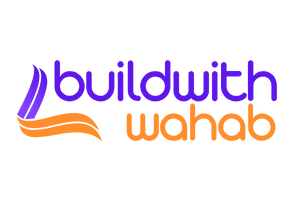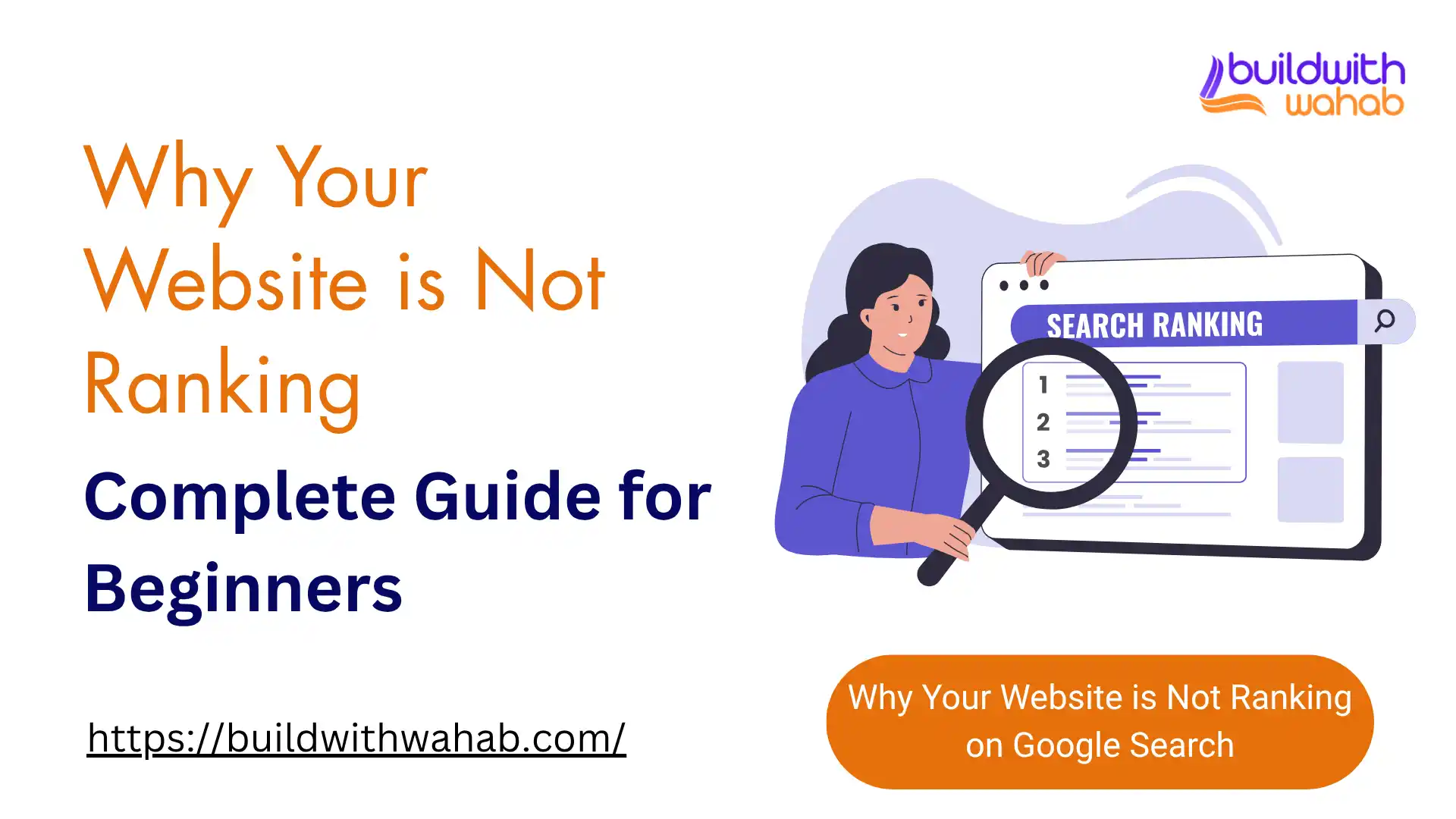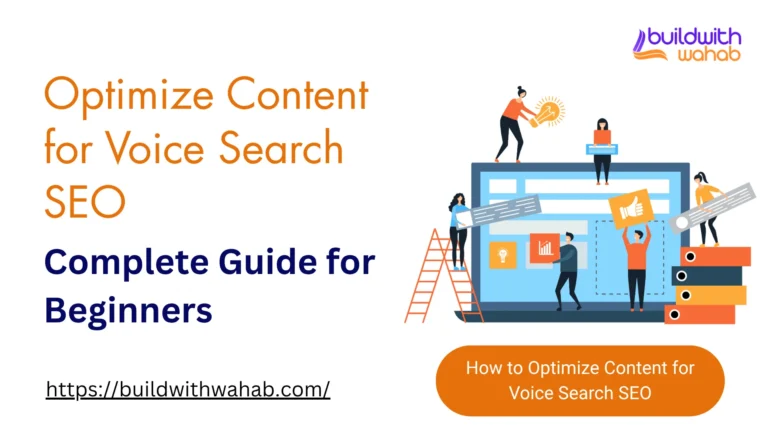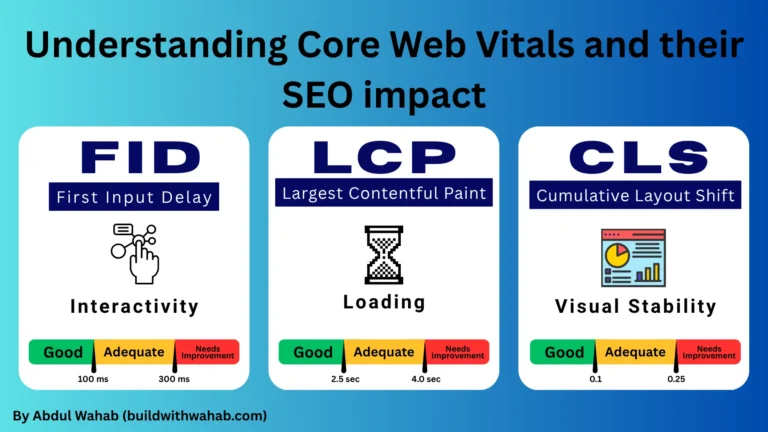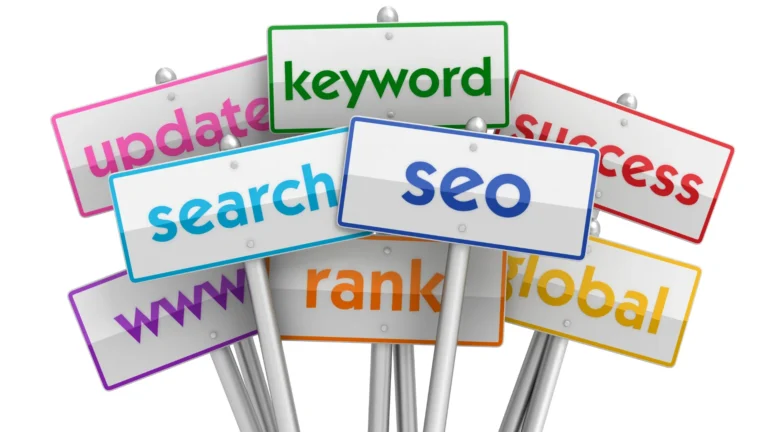Are you frustrated because your website is not ranking on Google? You’re not alone. Millions of website owners struggle with this exact problem every day. They create beautiful websites, write helpful content, and wonder why their website is not ranking on Google search results.
Getting your website to rank on Google is like trying to get noticed in a crowded room. You need the right approach, the right voice, and the right timing. Without these elements, your website is not ranking on Google and will remain invisible to potential customers.
This guide will show you exactly why your website is not ranking on Google and how to fix it. You’ll learn the most common ranking problems and get step-by-step solutions. By the end, you’ll have a clear roadmap to improve your Google rankings.
At Build with Wahab, we help businesses master effective SEO and digital marketing strategies that deliver results. We’ve helped hundreds of websites climb from page 10 to page 1 of Google search results.
Let’s dive into the real reasons your website is not ranking on Google and fix them once and for all.
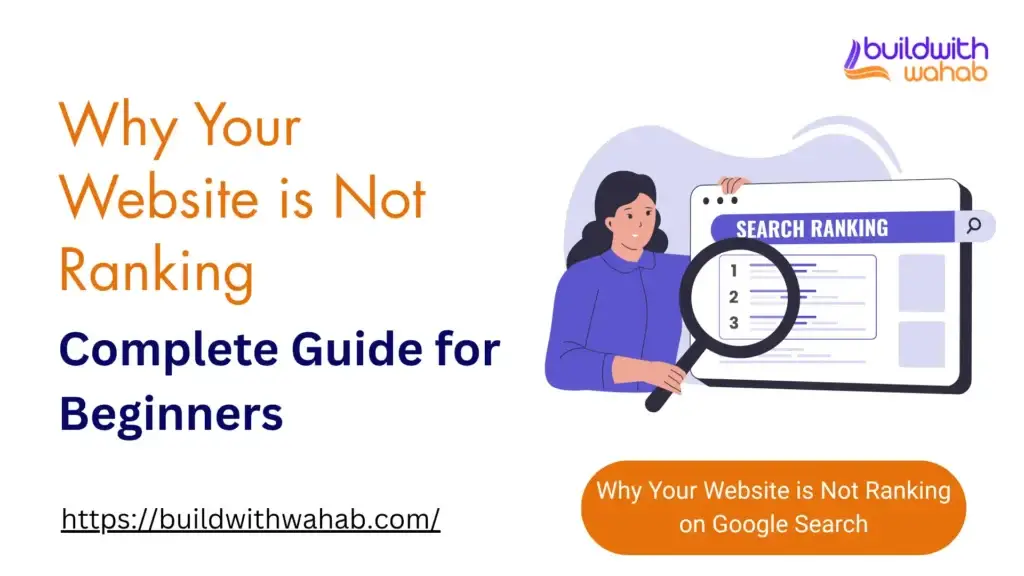
What Does It Mean When Your Website is Not Ranking?
When your website is not ranking on Google, it means your pages don’t show up in search results. This happens when people search for topics related to your business or industry.
Think of Google like a huge library. Your website is a book in that library. If Google can’t find your book or doesn’t think it’s helpful, it won’t recommend it to visitors.
There are different levels of ranking problems:
Complete Invisibility: Your website doesn’t appear anywhere in Google search results. This is the worst scenario and usually means technical problems.
Low Rankings: Your website shows up on page 5, 10, or beyond. Most people never look past the first page of results.
Partial Rankings: Some of your pages rank well, but others don’t. This suggests inconsistent SEO efforts across your website.
Keyword Mismatch: Your website ranks for words you don’t care about. You might rank for “blue widgets” when you sell “red gadgets.”
Understanding where you stand helps you choose the right fix. Most website owners experiencing a website is not ranking on Google fall into the “low rankings” category, which is easier to fix than complete invisibility.
Why Website Ranking Matters More Than Ever
Google ranking affects everything about your online business. When your website ranks higher, more people find you. More visitors usually mean more customers and more sales.
Here’s what good Google rankings give you:
Free Traffic: You don’t pay for each visitor like you do with ads. Once you rank well, Google sends you customers for free.
Trust and Authority: People trust websites that appear first in Google. They assume Google only shows the best results.
24/7 Marketing: Your website works for you even when you sleep. Good rankings bring customers day and night.
Competitive Advantage: If you rank higher than competitors, you get their potential customers.
Long-term Growth: Unlike paid ads, good rankings can last for months or years with proper maintenance.
The numbers tell the story. The first result on Google gets about 30% of all clicks. The second result gets about 15%. By the time you reach page 2, you’re fighting for scraps.
This is why fixing your website is not ranking on Google is so important. Every day your website stays buried, you lose potential customers to competitors.
| You May Also Like to Read: How to Speed Up WordPress Website Loading Time |
The 10 Most Common Reasons Your Website is Not Ranking
1. Your Website is Too New
Google needs time to trust new websites. This process is called the “Google Sandbox.” Even perfect websites can take 3-6 months to rank well.
If your website is less than 6 months old, be patient. Focus on creating great content and building authority. Don’t panic if you don’t see immediate results.
2. Technical SEO Problems
Technical issues stop Google from reading your website properly. Common problems include:
- Slow loading speeds (over 3 seconds)
- Mobile-unfriendly design
- Broken links and 404 errors
- Missing or duplicate meta tags
- Poor website structure
These problems are like having a locked door on your store. Customers want to enter, but they can’t get in.
3. Poor Content Quality
Google rewards websites that help users. If your content is thin, copied, or unhelpful, Google won’t rank you well.
Signs of poor content include:
- Pages with fewer than 300 words
- Content copied from other websites
- No clear value for readers
- Keyword stuffing
- Outdated information
4. Wrong Keyword Strategy
Many website owners target keywords that are too competitive or irrelevant. Trying to rank for “insurance” when you’re a local agent is like trying to compete with giants. This leads to the website is not ranking on Google for relevant searches.
Better approach: Target specific, local keywords like “car insurance Springfield” or “home insurance near me.”
5. Weak or No Backlinks
Backlinks are like votes of confidence from other websites. If no one links to your site, Google thinks you’re not important.
You need quality backlinks from relevant, trustworthy websites. One good link from a respected site beats 100 links from spam sites.
6. Inconsistent SEO Efforts
SEO is not a one-time task. Many website owners do some optimization, then forget about it. This leads to the website is not ranking on Google consistently. Google favors websites that consistently add value.
Regular content updates, fresh information, and ongoing optimization show Google you’re serious about helping users.
7. Local SEO Neglect
If you serve local customers, you need local SEO. Without proper local optimization, your website is not ranking on Google for local searches becomes a major problem. This includes:
- Google My Business profile
- Local citations
- Location-specific content
- Customer reviews
Without local SEO, you’re invisible to nearby customers searching for your services.
8. Ignoring User Experience
Google tracks how people interact with your website. If visitors leave quickly (high bounce rate), Google assumes your site isn’t helpful.
Factors that hurt user experience:
- Confusing navigation
- Pop-ups that block content
- Hard-to-read fonts
- No clear call-to-action
9. Mobile Optimization Issues
More than half of all searches happen on mobile devices. If your website doesn’t work well on phones, Google punishes your rankings.
Your website must load fast, look good, and function perfectly on mobile devices.
10. Unrealistic Expectations
SEO takes time. Many website owners expect results in days or weeks. Real SEO results usually take 3-6 months or longer.
This timeline depends on your industry, competition, and starting point. Be patient and focus on long-term strategies.
How to Diagnose Your Website’s Ranking Problems
Before you can fix ranking problems, you need to identify them. Here’s how to diagnose what’s causing your website is not ranking on Google:
Step 1: Check if Google Can Find Your Website
Type “site:yourwebsite.com” into Google (replace with your actual domain). This shows which pages Google has indexed.
If you see no results, Google hasn’t found your website yet. This is a serious problem that needs immediate attention, and explains why your website is not ranking on Google.
Step 2: Use Google Search Console
Google Search Console is a free tool that shows how Google sees your website. It reveals:
- Which pages are indexed
- Technical errors
- Search performance
- Mobile usability issues
Set up Search Console if you haven’t already. It’s essential for understanding your ranking problems. For comprehensive guidance on using these insights effectively, refer to Google’s official SEO Starter Guide, which provides authoritative best practices directly from Google.
Step 3: Test Your Website Speed
Use Google PageSpeed Insights to test your website speed. Aim for scores above 90 for mobile and desktop.
Slow websites frustrate users and hurt rankings. If your site takes more than 3 seconds to load, speed is likely causing your website is not ranking on Google properly.
Step 4: Check Mobile Friendliness
Use Google’s Mobile-Friendly Test to see if your website works well on phones. This test shows exactly what needs fixing.
Step 5: Analyze Your Content
Review your main pages and ask:
- Does this page help users?
- Is the information accurate and up-to-date?
- Would I find this page valuable?
- Does it answer questions users might have?
Be honest in your assessment. Poor content is one of the biggest causes of a website is not ranking on Google effectively.
Step 6: Research Your Keywords
Use tools like Google Keyword Planner or Ubersuggest to see if you’re targeting the right keywords. Look for:
- Search volume (how many people search for this)
- Competition level
- Relevance to your business
You might discover you’re targeting keywords that are too competitive or not relevant enough, contributing to your website is not ranking on Google.
| You May Also Like to Read: How to Write SEO-Friendly Blog Posts for Beginners |
The Step-by-Step Fix Guide
Now that you know what’s wrong, here’s how to fix it:
Phase 1: Fix Technical Issues (Week 1-2)
Improve Website Speed
- Optimize images (compress without losing quality)
- Choose faster web hosting
- Remove unnecessary plugins
- Use caching tools
Fix Mobile Issues
- Ensure responsive design
- Test on actual mobile devices
- Fix any broken elements on mobile
Resolve Crawl Errors
- Check Google Search Console for errors
- Fix broken links
- Create proper redirects for moved pages
- Submit the updated sitemap
Phase 2: Content Optimization (Week 3-6)
Improve Existing Content
- Add more helpful information to thin pages
- Update outdated content
- Fix grammar and spelling errors
- Add relevant images and videos
Create New Content
- Write about topics your customers care about
- Answer common questions
- Share helpful tips and advice
- Create detailed guides
Optimize for Keywords
- Use primary keywords in titles and headers
- Include related keywords naturally
- Write meta descriptions for each page
- Add internal links between related pages
For businesses needing help with content creation, professional content writing services can accelerate this process significantly.
Phase 3: Build Authority (Week 7-12)
Earn Quality Backlinks
- Create shareable content
- Reach out to industry websites
- Guest post on relevant blogs
- Build relationships with other business owners
Improve Local SEO
- Claim your Google My Business listing
- Get listed in local directories
- Encourage customer reviews
- Create location-specific content
Enhance User Experience
- Improve website navigation
- Add clear call-to-action buttons
- Reduce page load times
- Create helpful internal linking
Phase 4: Monitor and Adjust (Ongoing)
Track Your Progress
- Monitor rankings for target keywords
- Watch Google Search Console for improvements
- Track website traffic and conversions
- Adjust strategy based on results
Stay Updated
- Follow Google algorithm updates
- Keep content fresh and relevant
- Continue building quality backlinks
- Maintain technical health
For comprehensive optimization, consider comprehensive SEO services that handle all aspects of this process.
Advanced Strategies for Faster Results
Once you’ve covered the basics, these advanced strategies can accelerate your results:
Content Clustering
Create groups of related content that link to each other. This helps Google understand your expertise and improves rankings for entire topic areas.
Schema Markup
Add structured data to help Google understand your content better. This can lead to rich snippets and better visibility in search results.
Page Experience Optimization
Focus on Core Web Vitals:
- Largest Contentful Paint (loading speed)
- First Input Delay (interactivity)
- Cumulative Layout Shift (visual stability)
E-A-T Optimization
Demonstrate Expertise, Authoritativeness, and Trustworthiness:
- Add author bios and credentials
- Include contact information
- Display security certificates
- Show customer testimonials
Voice Search Optimization
Optimize for conversational queries:
- Target question-based keywords
- Use natural language in content
- Create FAQ sections
- Focus on local search phrases
To track your progress effectively, use a complete SEO checklist that covers all optimization aspects.
Tools and Resources You Need
Free Tools
Google Search Console
- Monitor search performance
- Find and fix technical issues
- Submit sitemaps
- Track mobile usability
Google Analytics
- Track website traffic
- Understand user behavior
- Measure conversion rates
- Identify top-performing content
Google PageSpeed Insights
- Test website speed
- Get specific improvement recommendations
- Monitor Core Web Vitals
- Track performance over time
Google My Business
- Manage local listings
- Respond to customer reviews
- Share updates and offers
- Track local search performance
Paid Tools (Worth the Investment)
Ahrefs or SEMrush
- Research keywords
- Analyze competitors
- Track rankings
- Find link opportunities
Screaming Frog
- Crawl your website for technical issues
- Find broken links
- Audit meta tags
- Analyze page structure
Hotjar or Similar
- See how users interact with your site
- Identify usability problems
- Understand user behavior
- Optimize conversion paths
If you’re using WordPress, professional WordPress development services can help implement these tools and optimizations properly.
| You May Also Like to Read: Understanding Core Web Vitals and their SEO impact |
Common Mistakes to Avoid
Mistake 1: Expecting Instant Results
SEO is a marathon, not a sprint. Expecting rankings to improve overnight leads to frustration and poor decisions.
Solution: Set realistic timelines and focus on consistent, long-term efforts.
Mistake 2: Keyword Stuffing
Using your target keyword too many times hurts readability and rankings.
Solution: Use keywords naturally and focus on creating helpful content.
Mistake 3: Ignoring Mobile Users
Optimizing only for desktop ignores more than half your potential audience.
Solution: Always test and optimize for mobile devices first.
Mistake 4: Buying Cheap Backlinks
Low-quality backlinks can hurt your rankings.
Solution: Focus on earning quality backlinks through great content and relationships.
Mistake 5: Neglecting Local SEO
If you serve local customers, ignoring local SEO is a huge missed opportunity.
Solution: Optimize for local search with Google My Business and local content.
Mistake 6: Copying Competitors Exactly
What works for competitors might not work for you.
Solution: Learn from competitors but create your unique approach.
Mistake 7: Focusing Only on Rankings
Rankings don’t automatically mean more customers.
Solution: Optimize for conversions, not just rankings.
Measuring Your SEO Success
Key Metrics to Track
Organic Traffic
- Total visitors from Google
- Traffic growth over time
- Traffic from target keywords
Keyword Rankings
- Position for target keywords
- Number of keywords ranking
- Featured snippet appearances
Conversion Metrics
- Leads generated from organic traffic
- Sales from organic visitors
- Email subscriptions from SEO
Technical Health
- Page load speeds
- Mobile usability scores
- Crawl errors and fixes
Setting Up Tracking
Google Analytics
- Set up goals for conversions
- Track organic traffic sources
- Monitor user behavior metrics
Google Search Console
- Track search performance
- Monitor technical issues
- Analyze click-through rates
Rank Tracking Tools
- Monitor keyword positions
- Track competitor rankings
- Identify new opportunities
Creating SEO Reports
Monthly Reports Should Include:
- Traffic and ranking changes
- Technical improvements made
- Content published
- Backlinks earned
- Goals for next month
Quarterly Reviews:
- Overall strategy assessment
- ROI from SEO efforts
- Competitive analysis
- Strategy adjustments needed
Conclusion
Your website is not ranking on Google is frustrating, but it’s not permanent. Most ranking problems have clear solutions that work when applied consistently.
The key is to start with the basics: fix technical issues, create helpful content, and build authority gradually. Don’t expect overnight results, but do expect steady improvement with consistent effort.
Remember that SEO is an ongoing process, not a one-time task. Google’s algorithms change, competitors improve, and user expectations evolve. The websites that rank well are those that adapt and continue improving.
Start with the diagnostic steps in this guide. Identify your biggest problems and tackle them systematically. Focus on helping your users, and Google rankings will follow.
Most importantly, be patient with the process. The businesses that succeed with SEO are those that think long-term and stay consistent with their efforts.
Ready to get started? Visit Build with Wahab for expert guidance and support in fixing your website is not ranking on Google.
Frequently Asked Questions About Website Ranking
Why is my website not ranking on Google at all?
This usually means Google hasn’t found or indexed your website yet. Check if you have a robots.txt file blocking Google. Submit your sitemap to Google Search Console. Make sure other websites link to yours.
How long does it take to fix a website is not ranking on Google?
New websites typically take 3-6 months to start ranking well. This depends on competition, content quality, and SEO efforts. Established websites with good authority can rank faster for new content.
Can I rank without backlinks?
While possible, it’s very difficult. Backlinks are one of Google’s top ranking factors. Focus on creating linkable content and building relationships with other websites in your industry.
What should I do if my website is not ranking on Google suddenly?
Sudden ranking drops can happen due to:
- Google algorithm updates
- Technical issues with your website
- Competitors are improving their SEO
- Penalties for violating Google guidelines
Check Google Search Console for any messages or warnings about your website is not ranking on Google.
Should I hire an SEO agency or do it myself?
This depends on your budget, time, and expertise. DIY SEO works if you have time to learn and implement strategies. Professional help speeds up results and avoids costly mistakes that keep your website is not ranking on Google.
How often should I update my website content?
Regular updates signal to Google that your website is active and relevant. Aim for at least one new piece of content per week. Update existing content quarterly or when information becomes outdated.
What’s the difference between SEO and paid advertising?
SEO brings free, long-term traffic but takes time to work. Paid advertising brings immediate traffic, but it stops when you stop paying. The best strategy often combines both approaches.
Is social media important for SEO?
Social media doesn’t directly impact rankings, but it helps with:
- Building brand awareness
- Driving traffic to your website
- Creating opportunities for backlinks
- Engaging with your audience
How do I know if my SEO is working?
Track these metrics:
- Organic traffic growth
- Keyword ranking improvements
- Increase in quality backlinks
- Better user engagement metrics
- More leads and conversions
Can I fix my website is not ranking on Google with competitive keywords?
Yes, but it requires significant time and effort. Start with less competitive, long-tail keywords. Build authority and gradually target more competitive terms.
